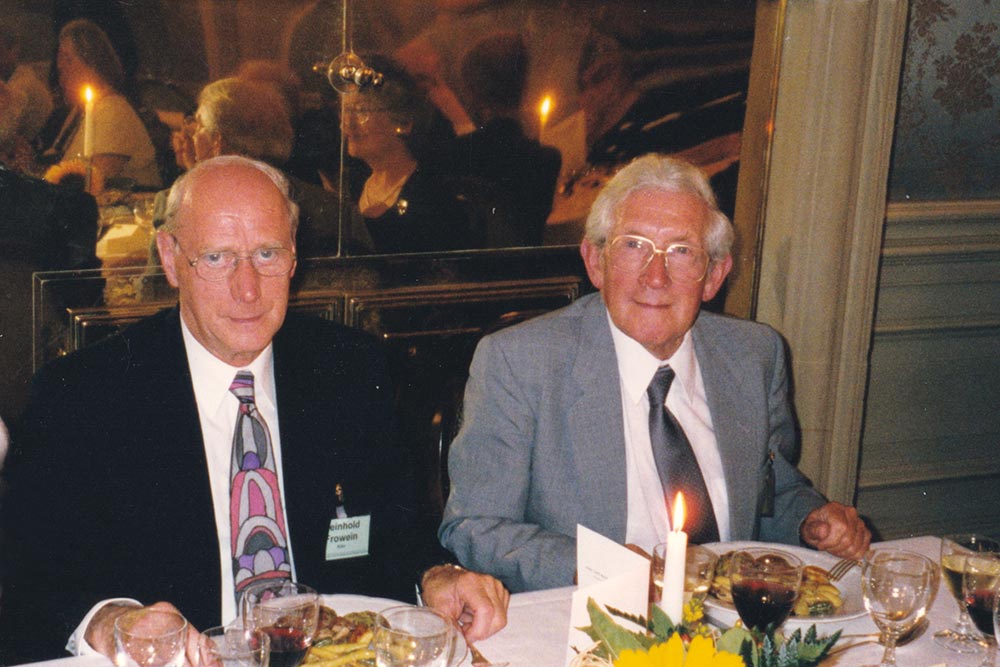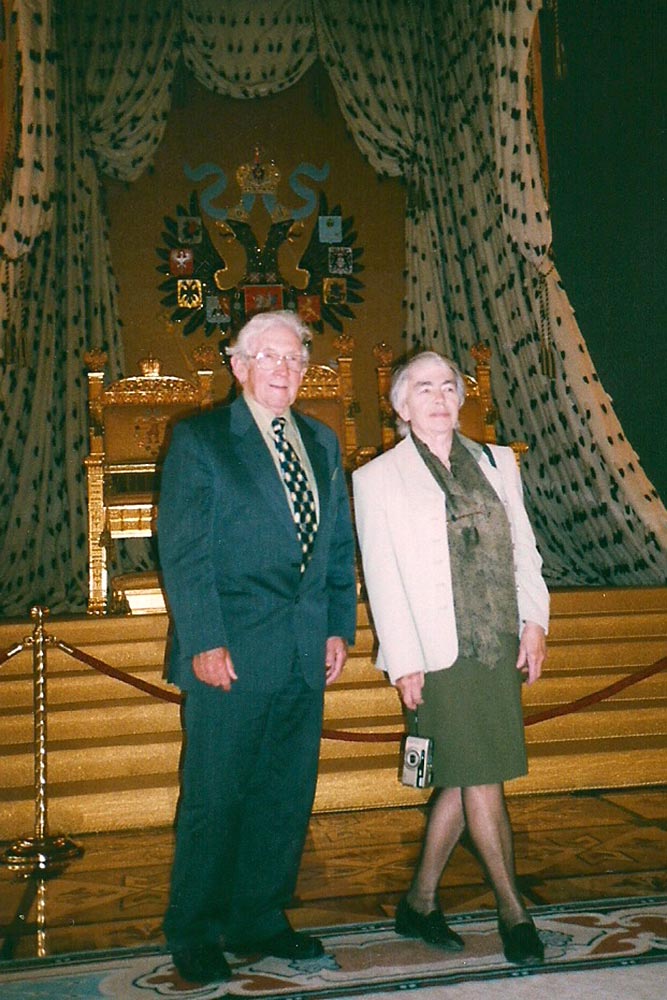, EMN Hon. Memb. 2nd EMN Münster 1997 was Professor of at Glasgow University (1968 – 1991), Dean of medicine in Glasgow (1981 to 1986); first full-time chair of neurosurgery in Scotland. https://en.wikipedia.org/wiki/Bryan_Jennett
https://www.glasgowcomascale.org/ Citation: “THE GLASGOW STRUCTURED APPROACH to ASSESSMENT of the GLASGOW COMA SCALE. 1974 the Institute of Neurological Sciences, Glasgow, was a world leader in brain injury research and clinical care. Professor Jennett and Mr Teasdale, (at that time a neurosurgical senior registrar), published a paper in the Lancet on the Assessment of Coma and Impaired Consciousness that proposed a structured method of assessment that would become known as the Glasgow Coma Scale. …Bryan Jennett was made a Commander of the British Empire in 1991. His major interest was head injury and the mechanisms of acute brain damage… Pioneering work followed, applying laboratory science to clinical practice and during this time the Glasgow unit was a magnet for trainees and researchers from all over the world… Long-standing uncertainties in establishing a prognosis for head injuries represented a significant challenge, which was gradually unravelled through a description of the Persistent Vegetative State (1972), with the leading American neurologist, Dr Fred Plum. 1974 the Glasgow Coma Scale, with Graham Teasdale, and the Glasgow Outcome Scale (1975), with Michael Bond,” End of citation, have changed the knowledge and clinical management of Head Injuries in the world. We met at the 6th EANS Congress in Paris, July 15- 20, 1979, where their scientific results on clinical assessment of impaired brain functioning in head injuries with aid of their GCS and GOS were presented and intensively discussed, four years after their first presdntation at the 5th EANS congress in Oxford, UK.. FOTO Breitband wird ihnen zugeschickt!) In those days I wasn’t just looking at the brilliantly easy-to-up clinical signs of GCS for assessing existing awareness disorders. Instead I reported about pathophysiology changes at the ICU by continuous multimodal bedside monitoring of head injuries, including CCT diagnostics at Samiis ICU in Hanover(Acta neurochir. Suppl.28, 85 1979). This is how we got into our conversation, which led to a collegial, scientifically enriching mutual exchange in the following years. We met at different places in the world. At the 2nd EMN in Münster Bryan Jennett, EMN Honorary Member, and his wife Shyla were our guest at our home together Mrs Margot Miller, the widow of our esteemed colleague late Douglas Miller, 2nd EMN treasurer. One year before in his honourable memory EMN presidium has established the D. Miller Memorial Lecture, Hier am Rand einzufügen Fotos folgen: Jennett at 1st EMN Salzburg,1st Douglas Miller Memorial Lecture, 2nd EMN Münster 2nd EMN Honorary Member ,
6th EMN im Kremlin: 2001 Bryan Jennett, guest of honour at our 6th EMN at the Burdenko NNI, Moscow , obviously enjoyed the well organised visit to the Kremlin with his wife Shayla.
1997 at 2nd IBIA World Congress in Seville, Spain , Bryan Jennett (PVS), Franz Gerstenbrand, Vienna (AS) , and I (WFNS Committee neurosurgical rehabilitation) met together. We wanted to think about how we could come to a scientifically justified medical diagnosis in the case of AS and PVS in order to use AS and VS(PVS) both syndromes equally for clinical assessment. Jennett agreed to skip permanent in VS, secondly he and Gerstenbrand agreed to us AS and VS both together, since AS has been mainly used only in Europe. Jennett book (2002) The Vegetative State, medical effects, ethical and legal dilemmas echoes our common 1992 conclusion as well as the EFNS Guidelines for quality management of AS VS published by me in 2007 However, since numerous clinicians felt still uncomfortable with the term “vegetative”, we finally replaced both terms AS and VS with a new name in 2010, UWS, unresponsive wakefulness syndrome (Laureys et al, BMC Med.2010,8:68).
was Professor of neurosurgery at Glasgow University (1968 – 1991), Dean of medicine in Glasgow (1981 to 1986); first full-time chair of neurosurgery in Scotland. https://en.wikipedia.org/wiki/Bryan_Jennett
https://www.glasgowcomascale.org/ Citation: “THE GLASGOW STRUCTURED APPROACH to ASSESSMENT of the GLASGOW COMA SCALE. 1974 the Institute of Neurological Sciences, Glasgow, was a world leader in brain injury research and clinical care. Professor Jennett and Mr Teasdale, (at that time a neurosurgical senior registrar), published a paper in the Lancet on the Assessment of Coma and Impaired Consciousness that proposed a structured method of assessment that would become known as the Glasgow Coma Scale. …Bryan Jennett was made a Commander of the British Empire in 1991. His major interest was head injury and the mechanisms of acute brain damage… Pioneering work followed, applying laboratory science to clinical practice and during this time the Glasgow unit was a magnet for trainees and researchers from all over the world… Long-standing uncertainties in establishing a prognosis for head injuries represented a significant challenge, which was gradually unravelled through a description of the Persistent Vegetative State (1972), with the leading American neurologist, Dr Fred Plum. 1974 the Glasgow Coma Scale, with Graham Teasdale, and the Glasgow Outcome Scale (1975), with Michael Bond,” End of citation, have changed the knowledge and clinical management of Head Injuries in the world. We met at the 6th EANS Congress in Paris, July 15- 20, 1979, where their scientific results on clinical assessment of impaired brain functioning in head injuries with aid of their GCS and GOS were presented and intensively discussed, four years after their first presdntation at the 5th EANS congress in Oxford, UK.. FOTO Breitband wird ihnen zugeschickt!) In those days I wasn’t just looking at the brilliantly easy-to-up clinical signs of GCS for assessing existing awareness disorders. Instead I reported about pathophysiology changes at the ICU by continuous multimodal bedside monitoring of head injuries, including CCT diagnostics at Samiis ICU in Hanover(Acta neurochir. Suppl.28, 85 1979). This is how we got into our conversation, which led to a collegial, scientifically enriching mutual exchange in the following years. We met at different places in the world. At the 2nd EMN in Münster Bryan Jennett, EMN Honorary Member, and his wife Shyla were our guest at our home together Mrs Margot Miller, the widow of our esteemed colleague late Douglas Miller, 2nd EMN treasurer. One year before in his honourable memory EMN presidium has established the D. Miller Memorial Lecture, Hier am Rand einzufügen Fotos folgen: Jennett at 1st EMN Salzburg,1st Douglas Miller Memorial Lecture, 2nd EMN Münster 2nd EMN Honorary Member ,
6th EMN im Kremlin: 2001 Bryan Jennett, guest of honour at our 6th EMN at the Burdenko NNI, Moscow , obviously enjoyed the well organised visit to the Kremlin with his wife Shayla.
1997 at 2nd IBIA World Congress in Seville, Spain , Bryan Jennett (PVS), Franz Gerstenbrand, Vienna (AS) , and I (WFNS Committee neurosurgical rehabilitation) met together. We wanted to think about how we could come to a scientifically justified medical diagnosis in the case of AS and PVS in order to use AS and VS(PVS) both syndromes equally for clinical assessment. Jennett agreed to skip permanent in VS, secondly he and Gerstenbrand agreed to us AS and VS both together, since AS has been mainly used only in Europe. Jennett book (2002) The Vegetative State, medical effects, ethical and legal dilemmas echoes our common 1992 conclusion as well as the EFNS Guidelines for quality management of AS VS published by me in 2007 However, since numerous clinicians felt still uncomfortable with the term “vegetative”, we finally replaced both terms AS and VS with a new name in 2010, UWS, unresponsive wakefulness syndrome (Laureys et al, BMC Med.2010,8:68).


